Yixing Clay: Material, History & Production
What is Yixing clay?
Yixing clay, or Zisha clay is the most famous clay in the world of ceramics. Zisha clay is a natural clay that has been used in Chinese pottery since the Song Dynasty, but is most famous for its use in Chinese Yixing teapots during the Ming Dynasty. But why is Yixing teapot so popular? And what makes Yixing clay so special? To find out more about the special Zisha clay in Yixing teapots, this article will provide a brief summary on what Yixing teapots are, a brief history and background, a summary of the unique properties and uses of Yixing clay, and an introduction of the different types of Yixing clay.
Brief History and Background of Yixing Clay
Yixing clay is a famous 1,000 year old Chinese material for teapots, that originates from the region of the city of Yixing, in the Chinese province of Jiangsu. Yixing tea pots date back to the Song Dynasty (960–1279) and they were exported to Europe as early as the 17th century. The rise of Yixing clay teapots’ popularity is related to the popularization of Oolong tea, as they were perfectly suited for Oolong tea and Black tea brewing. With the popularity of Oolong and Black tea, the craftsmanship of Yixing teapots also improved.
| Period | Events |
|---|---|
| Song Dynasty | Yixing clay is discovered and first used for pottery |
| Ming Dynasty | Yixing teapots became popular throughout China |
| Qing Dynasty | Yixing teapots are exported to Europe |
| Modern day | Yixing clay teapots are still popular and are sold throughout the world |
Data Source: Cultural heritage records from the China National Academy of Arts and documented in UNESCO Intangible Cultural Heritage reports indicate widespread domestic use of Yixing teapots during the Ming Dynasty, particularly during the reign of the Wanli Emperor.
URL: https://www.ihchina.cn/project_details/13630/
Data Source: Export records from the Qing Dynasty and historical trade archives reveal that Yixing teapots were exported via the Maritime Silk Road. This is verified by Chinese customs records and European museum collections (e.g., the British Museum and V&A Museum).
URL: https://www.vam.ac.uk/articles/the-teapot
Alternate Source: Research referenced by the Palace Museum in Beijing — http://www.dpm.org.cn/classify_detail/256784.html
Many scholars and Chinese nobility of this time period drank tea made from Yixing teapots. Due to its material, the Yixing teapot quickly gained the favor of many tea lovers and potters began to master the techniques required to make Yixing clay pots. The Yixing region is the perfect geological location to gather such rare clay, as it is rich in the various minerals needed for the clay’s signature color, as well as being close to the Yangtze River. Best Yixing clay teapots Yixing teapot over 300 years old What about modern mass production, how can it be so rare?
Unique Properties and Uses of Yixing Clay

The special properties of Yixing Zisha clay come from the different types of minerals and Yixing clay ore. Yixing clay is a natural clay, but due to a mix of the different clay materials of purple clay ore, green clay, and red clay, it contains many essential minerals including: iron oxide (used in pottery), quartz (used in glassmaking and ceramics), and mica (used in electronics, paint, and construction material). The unique qualities of Yixing clay compared to other material are what distinguish Yixing teapots from other types of teapots. The porosity of a Yixing clay pot allows it to absorb the flavor of tea brewed inside of it, and pour it back out into the same leaves the next time the teapot is used. Dedicated tea connoisseurs will use a single dedicated Yixing teapot for each type of tea, in order to season the teapot and enhance the flavor of one type of tea.
Yixing clay is best known for its application in teaware, especially its famous teapots, but is also quite often used by artists in cups, tea pets and even large sculptures. Yixing clay attracts such a wide audience due to its natural beauty and texture. Upon completion, Yixing ware is often left unglazed, showing off the clay’s natural color which is then enhanced with repeated exposure to tea. As time goes on, the clay develops a glaze which smooths the texture of the Yixing ware and brings out the rich natural colors of the clay. A Yixing Potter’s Take: “A Yixing teapot isn’t just something you use; it’s something that lives alongside you.” Yixing clay’s complexity make it a material full of character and full of life, representing the deep history of China’s people and winning the hearts of tea enthusiasts time and time again. With 2,000 years of history behind them, Yixing clay teapots remain living and growing works alongside those who invest themselves in patience, learning and using them.
Types of Yixing Clay
Yixing clay is not a single homogeneous substance. Rather it is comprised of several different types of clay that vary in color texture and brewing quality. Knowing how to tell apart the several varieties of Yixing clay can be a useful skill for anyone interested in Yixing pottery. Be they collectors tea lovers or those with a simple curiosity about the ancient craft. Here’s a closer look at the main types of Yixing clay and how to identify them.
Main Varieties (Zisha, Hongni, Duanni)
The three principal types of Yixing clay are: Zisha (Purple Clay) Hongni (Red Clay) and Duanni (Yellow Clay). Each of these types are highly regarded for their diverse mineral contents and their differing brewing properties. Zisha (紫砂) – Purple Clay Zisha is the most the famous and widely used of Yixing clays. Purple Clay gets its nomenclature because of the purple iron like pallor on it’s surface. Despite this Zisha can range in color from deep purples to browns to that of the blaze. The Zisha we are most accustomed to appears in earthen hues from dark browns to maroons. Zisha teapots are highly regarded for both their ideal porosity and their excellent heat retention. Hongni (红泥) – Red Clay Hongni is a bright colorful and dynamic material with a smooth texture. The identifiable red-orange of Hongni is striking compared to typical clays. Hongni is noted for its finer grains and it is utilized in the creation of comparatively smaller teapots. Hongni teapots are known to bring out subtle flavors within teas and are therefore often used to steep softer lighter and more floral varieties of teas. Duanni (段泥) – Yellow Clay Duanni is a comparatively rare variety of Yixing clay that is prized for its yellowish finish high sand content as well as its other mineral contents. The texture of Duanni can be noted as being relatively rough due in part it’s sandy quality. Duanni Yixing pots are also preferred by collectors due in part to the comparative rarity and price of this variety of Yixing clay. Duanni teapots are known to mellow down stronger teas being perfect for black or aged teas. Learning how to identify Yixing clay is the first step you can make toward becoming a more informed consumer of any new or existing Yixing pieces you may have your eye on. Comparison Table: Main Yixing Clay Types Clay Type | Color Range | Texture | Best For | Rarity ———-|————|———|———|——- Zisha (紫砂) | Purple brown red | Medium-coarse | Oolong Pu-erh | Common Hongni (红泥) | Red orange | Fine smooth | Green white teas | Moderate Duanni (段泥) | Yellow beige | Coarse sandy | Black aged teas | Rare
How to Identify Different Types
Identifying Yixing clay types can be a difficult proposition given the rise of imitation pieces and mass production wares. There nonetheless remain clues to spotting the real deal. Color: Authentic Yixing clay has a natural and earthy color that darkens with use. Artificially colored or glazed pieces are typically not genuine. Texture: Feel the surface with your fingers. Zisha will felt gritt8y Hongni will feel smooth and Duanni should felt rougher and sandy. Sound Test: Tap the teapot lightly. Genuine Yixing clay will make a crisp metallic sound while imitations will make a dull thud. Absorption: Pour hot water over the pot. Genuine Yixing clay will absorb a light layer of water darkening the pot. Glazed or imitation pieces will repel the water or remain the same color.

Fact: Some master potters blend different Yixing clays to create unique colors and textures resulting in one-of-a-kind pieces that are highly prized by collectors. In summary, recognizing different types of Yixing clay and comprehending how to tell them apart is crucial for anyone who appreciates the beauty and utility of these remarkable teapots. Each variety possesses unique characteristics that further enrich the tea experience, making Yixing pottery a captivating world worth exploring.
Origins of Yixing Clay
The tale of Yixing clay starts with the very earth. The mineral deposits that give Yixing clay its treasured qualities are found only in a narrow belt of terrain. Whether knowing which clay it is or how it’s obtained, greater insight deepens the affection for knowing that the handmade teapot or cup crafted from it yields the beauty and rusticity practitioners seek.
Where is Yixing clay from?
Yixing clay is found only in the region near the city of Yixing in Jiangsu province, eastern China. The best-known Yixing clay deposits are located in Dingshu Town, and the best Yixing clay mines are Huanglong Mountain and Zhaozhuang Mountain, in the same region. These hills of southern Jiangsu province have been the main source of Yixing clay for centuries. List of Yixing Clay Mining Sites Name | Notes | Status —–|——|——- Huanglong Mountain | Historically the most famous source | All but exhausted Zhaozhuang Mountain | Considered the richest source of Duanni and Hongni clays | Production limited Shushan Mountain | Considered a HQ source of Zisha | Production limited Yixing clay-collecting sites have distinct beds of clay, each with a unique type of clay. For example, Duanni is often found in an upper stratum, while Zisha or Hongni could be found below. It’s this stratification which produces the distinctive varieties of Yixing clay. Did You Know: The best quality Yixing clay is sometimes found several meters below the surface, resulting in particularly demanding quarrying and laboring. This is one reason why genuine Yixing pottery and teapots are becoming rarer.
Sustainability and Modern Sourcing
As the popularity of Yixing pottery has increased, so too have concerns over the sustainability of its production. Many of the original clay sources, such as those found in Huanglong Mountain, have been depleted, or are protected by the government in an effort to prevent their exhaustion. As a result, the production of Yixing clay is now much more heavily regulated, and a greater emphasis is placed on sustainability. Regulation and Modern Sourcing Techniques Government Regulation: The Chinese government has cracked down on Yixing clay mining, thereby regulating all processes. Today, the only access to remaining Yixing clay mines is through licensed Yixing workshops. Clay Blending: many pottery businesses take to blending their new clay with recycled or aged Yixing clay – a positive push towards sustainability and maintaining quality of production. Utilisation of alternative clay sources: larger workshops have been known to use clays similar to Yixing clay from areas situated near to the original mines. Although some purists reject these alternatives, there is no doubting the similarity of these clays to the authentic Yixing clays of the original mines in terms of their properties. Table of Environmental Impact of Different Sourcing Practices Practice | Environmental Impact | Status ———|———————|——- Traditional open-pit mining | Very high | Banned Regulated small-scale mining | Lower | Encouraged Clay recycling/blending | Negligible | Increasing Every handful of Yixing clay is a piece of history. Responsible sourcing ensures that future generations can continue this tradition. Case Study: In 2005, several unregulated Yixing clay mines were shut down by the Chinese government, over environmental concerns and to protect the remaining resources for Yixing potters in future. Consequently, this has led to a rise in the price of Yixing clay, as well as a boom in forgeries, which further highlights the importance of knowing the source of one’s Yixing teaware and other pottery. To sum up, The source of Yixing clay is as important as the clay itself. The landscape, the mines and responsible stewardship are all part of the appeal of Yixing pottery. So an authentic Yixing teapot is, in a very real sense a piece of real estate. One which is less and less readily available.
Yixing Pottery Craftsmanship
The artistry of Yixing pottery lies not just in the clay, but in the hands that shape it. Yixing potters are renowned for their meticulous craftsmanship, passed down through generations. The techniques they use—both traditional and modern—are what transform raw clay into teapots that are both functional and works of art. Let’s explore how these masterpieces come to life.
Traditional Methods of Handcrafting

Yixing pottery is famous for its hand-formed construction. Unlike wheel-thrown mass-production stoneware, authentic Yixing teapots are rarely formed on a potter’s wheel; rather they are moulded and hand-formed by a variety of hand-building techniques including slap-building, coiling and pinching. This allows the artist greater control over the size and the shape of the pot, even the thickness of walls. How a Yixing Teapot is Made (Step-by-Step) 1.Preparing the Clay: The raw Yixing clay is first cleaned, aged, and kne
Modern Innovations in Pottery
While tradition remains at the core of Yixing pottery, modern techniques have also found their place. Some contemporary artisans use molds to speed up production, especially for popular shapes. However, the best workshops still rely on handcrafting for their most prized pieces.
Nevertheless, the most cherished Yixing teapots remain those crafted entirely by hand, employing the apprenticed skills handed down through years of dedicated practice. It’s these teapots that collectors and tea masters typically seek out for their uniqueness, the quality of their make, and the gentle way in which they affect the tea experience. Did you know? A single master-crafted Yixing teapot can take several days—or even weeks—to complete, depending on the complexity of the design. All in all, Yixing pottery techniques are a perfect balance between traditional craftsmanship and modern artistry. Either traditionally made by hand or made with modern methods, each teapot or object is a product of patience, accuracy and the passion of its creator.
Yixing Clay in Tea Culture
Yixing clay isn’t just a material for crafting teapots—it is a living piece of tea culture, especially in China and among tea lovers globally. The connection between Yixing clay and tea is close, almost mystical. Over the centuries, these teapots have become beloved not just for their artistry but for how they change the tea-drinking experience.
Why Yixing Teapots are Special
The secret to the Yixing teapot’s popularity is its porous structure. Unlike glazed ceramics, Yixing clay is left raw and unglazed: this allows the teapot to “breathe”. With each subsequent brew, the teapot absorbs some of that tea’s aroma and flavour, over time developing a form of seasoning known as a patina. As a result, a well-used Yixing teapot will eventually enhance the taste of tea brewed inside, offering richer and more nuanced cups with each brew.

Case Study: A tea master in Shanghai has used the same Yixing teapot for over 30 years, brewing only aged pu-erh. The teapot, once a pale purple, now glows with a deep, lustrous brown. The tea brewed in this pot is said to have a complexity and smoothness that can’t be replicated in any other vessel. Quote from a Tea Enthusiast: “A Yixing teapot is like a diary of your tea journey. Every cup leaves a memory behind.”
Caring for Yixing Pottery
Proper care is crucial to preserve the special characteristics of Yixing clay. Unlike other teapots, Yixing pots should never be washed with soap or detergents, as the porous clay will absorb these flavors and ruin the pot’s seasoning.
| Do’s | Don’ts |
|---|---|
| Rinse with hot water | Use soap or detergents |
| Air dry with lid off | Store wet or closed |
| Use for one tea type | Brew different teas in one pot |
| Handle gently | Scrub with abrasive materials |
Data Source: Guidelines based on cultural preservation and craftsmanship documentation from the Intangible Cultural Heritage of China – Yixing Zisha Pottery Making Techniques.
- URL: https://www.ihchina.cn/protectdetails/14755.html
(Provides official details on traditional handling, production, and use practices, including proper care as passed down in artisan communities.)
Data Source: Product handling recommendations from the China National Arts & Crafts Society and certified Yixing artisans (Registered under Jiangsu provincial and national cultural heritage programs).
- URL: https://www.china.cn/zisha/
(Contains articles and artisan interviews emphasizing cleaning with water only and use for a single type of tea.)
Fact: With proper care, a Yixing teapot can last for generations, becoming a treasured family heirloom. Tip: If you inherit or purchase an old Yixing teapot, you can “reset” its flavor memory by soaking it in hot water for several hours, then dedicating it to a new tea. In short, Yixing clay teapots are not just containers – they are partners in your tea ceremony. With their flavor-enhancing properties, heat retention, and evolving beauty, they are a treasured tradition in tea cultures around the world.
Frequently asked questions
Yixing clay and pottery arouse curiosity and sometimes confusion, especially for those who are new to the world of Chinese tea. Here are answers to some of the most popular and useful Yixing clay and teapot questions and their merit.
How to Tell If Yixing Clay is Real

With the growing demand of Yixing teapots, counterfeit versions are everywhere. Knowing how to tell if a Yixing is real is important for collectors and tea lovers alike.
| Feature | Authentic Yixing | Fake/Imitation |
|---|---|---|
| Finish | Unglazed, natural | Glazed, artificial |
| Sound | Metallic, crisp | Dull, flat |
| Craftsmanship | Hand-finished | Molded, mass-produced |
| Artist’s Mark | Present, clear | Often missing or fake |
| Water Absorption | Yes | No |
Data Source: Intangible Cultural Heritage of China – Yixing Zisha Pottery Techniques listed under UNESCO-style registry by the Ministry of Culture and Tourism of China
- URL: https://www.ihchina.cn/protectdetails/14755.html
(Highlights traditional handcraft methods, porous properties of Zisha clay, and recognition of genuine artisan marks.)
Data Source: Tea Institute at Penn State – Research on Yixing Teapots and Artisan Authentication
- URL: https://teainstitute.org/teaware/yixing-identification/
(Provides detailed side-by-side comparisons of real vs. imitation teapots, including sound, weight, finish, and water absorption tests.)
Is Yixing Clay Safe For Use?
Safety is a common concern, especially when it comes to materials that come into contact with food and drink. Authentic Yixing clay is completely safe for brewing tea. The clay is natural, free from harmful chemicals, and fired at high temperatures, which makes it non-toxic and durable. Important Note: Some low-quality or fake teapots may contain harmful additives or glazes. Always buy from reputable sources and look for artist marks or certificates of authenticity. Fact: Traditional Yixing teapots have been used for centuries with no reported health risks, making them a trusted choice for tea lovers.
What Makes a Yixing Teapot Valuable?

The value of a Yixing teapot depends on many factors, including its clay quality, craftsmanship, age, and provenance.
“A great Yixing teapot is like a fine wine—it only gets better with age and use.” — A collector In 2010, an extraordinarily rare 18th-century Yixing teapot made by the master potter Chen Mingyuan sold in an auction for more than $2 million USD, perfectly exemplifying the immense value some pieces can have. What Adds Value to a Yixing Teapot Factor | Impact on Value ——-|————— Rare clay | High Master potter | Very high Age & patina | High Provenance | High Condition | Essential These Frequently Asked Questions will provide you with the basic you need to know whether you are getting your very first Yixing pottery teapot or if you are adding to your existing collection. Knowledge is the best tool for appreciating and investing in these amazing works of art.
In conclusion
The enduring appeal of Yixing clay is a testament to the enduring relationship between nature, craftsmanship, and culture. For generations, Yixing potters have taken the humble resource of earth from their landscapes and fashioned it into objects of value and beauty. Yixing teapots continue to be cherished by tea drinkers and collectors throughout the world. The story of Yixing clay is not simply a story of pottery, but of tradition, innovation, and a meaningful connection between people and the land they live on. The enduring appeal of Yixing clay. Yixing clay is unique. With rich mineral resources found only in the remote hills of Jiangsu Province, each pot has its own character that is impossible to reproduce elsewhere. From the porous qualities of the clay that allows the teapot to “remember” the teas brewed within it over time, a Yixing teapot becomes much more than a pot: it is a companion that is familiar with the brewed sensations that have been tasted over time. Time-tested Yixing pottery techniques create a work of art that is timeless and goes beyond the clay vessel. A teapot fabricated using a 供春技法 (gōng chūn jì fǎ) ‘Gongchun technique’, a time-tested method that has been used by generations of potters. A Yixing clay teapot barrel glazed with colour glaze. There is a value in tradition. The generations of skill passed down from family to family that are used to produce a Yixing teapot, whether using traditional methods or employing them with the aid of modern innovations, guarantee that each authentic Yixing pot is stamped with the mark of the maker. There is a quality in the patience, craft, and respect with working with whatever resource is available that adds to the value of a Yixing teapot. This is a Yixing tradition that is alive today. With changing times, the tradition moves on too. Sustainable management and protection of clay resources are of utmost priority. To support future generations of potters, tea lovers and collectors can make educated and informed decisions by buying pieces from Yixing potters, ensuring each authentic piece contains the skill and craft of the potter.




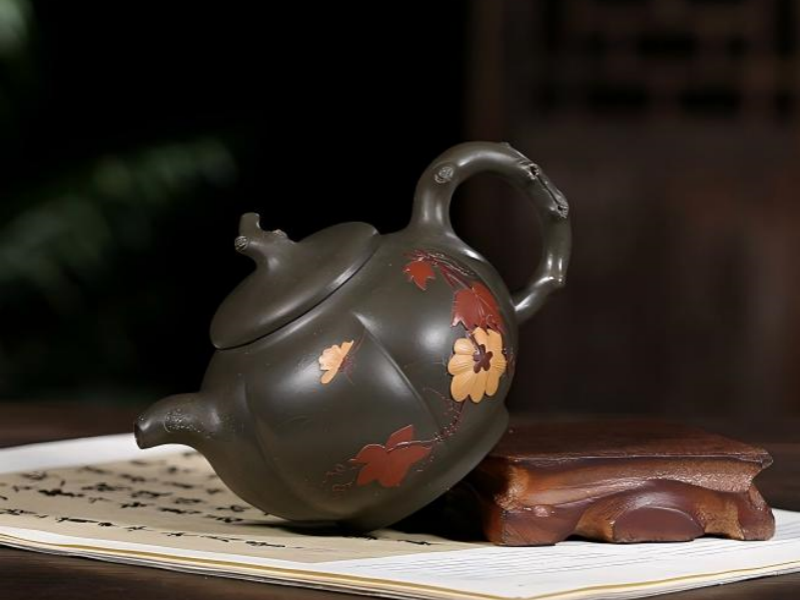



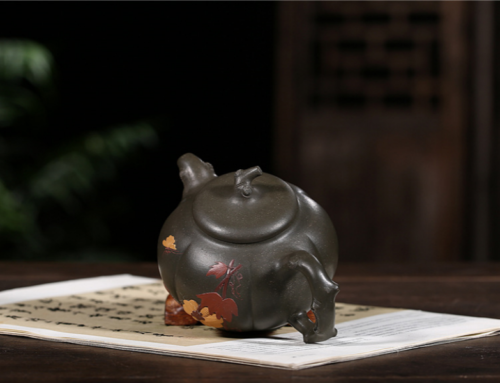
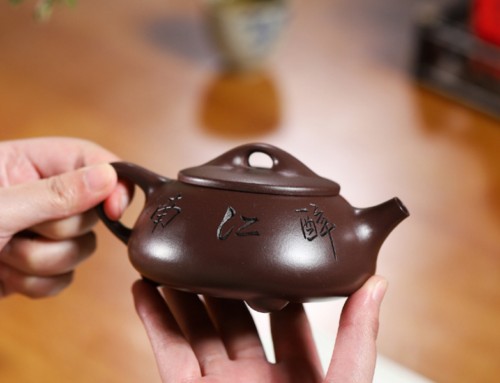



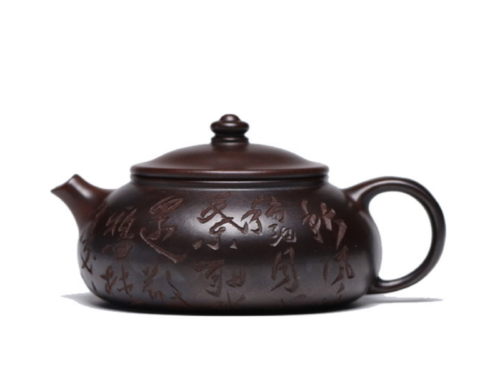 Lotus Flower - Traditional Zisha Clay for White Tea Enthusiasts | Yserene
Lotus Flower - Traditional Zisha Clay for White Tea Enthusiasts | Yserene 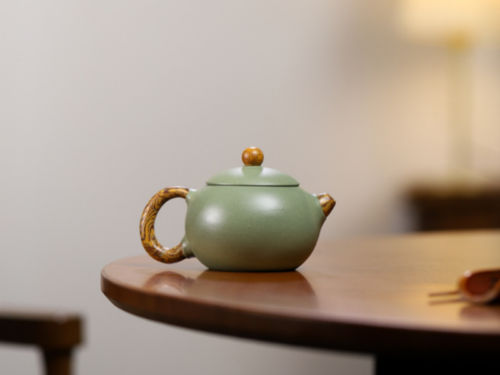 Bamboo Grove - Authentic Purple Clay for Green Tea Brewing | Yserene
Bamboo Grove - Authentic Purple Clay for Green Tea Brewing | Yserene